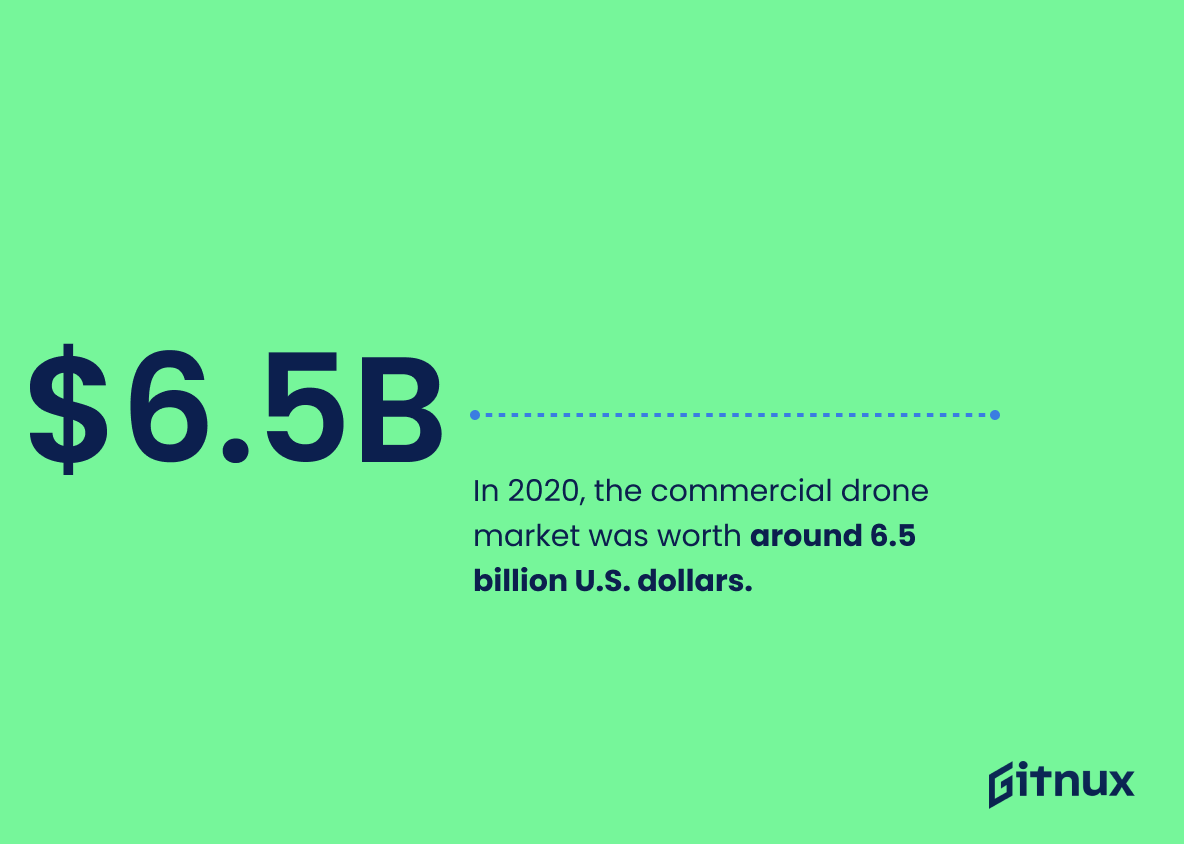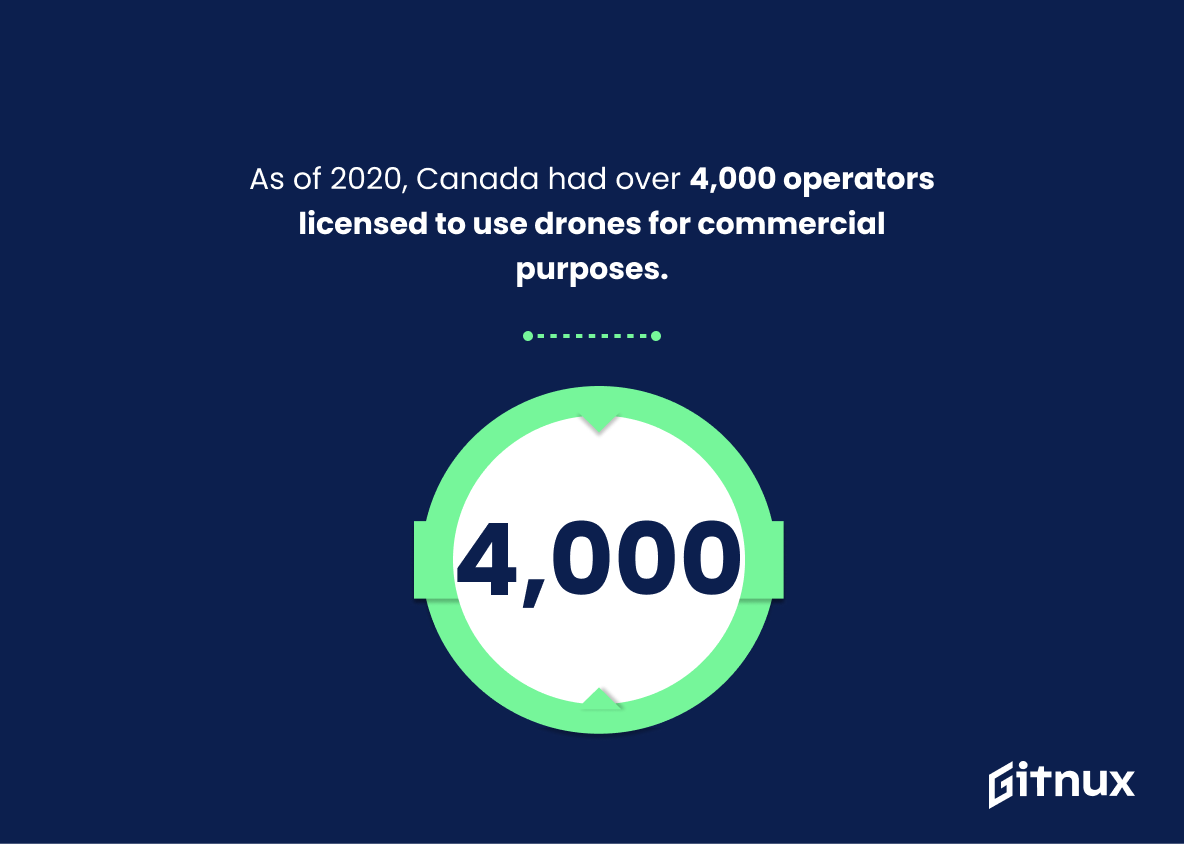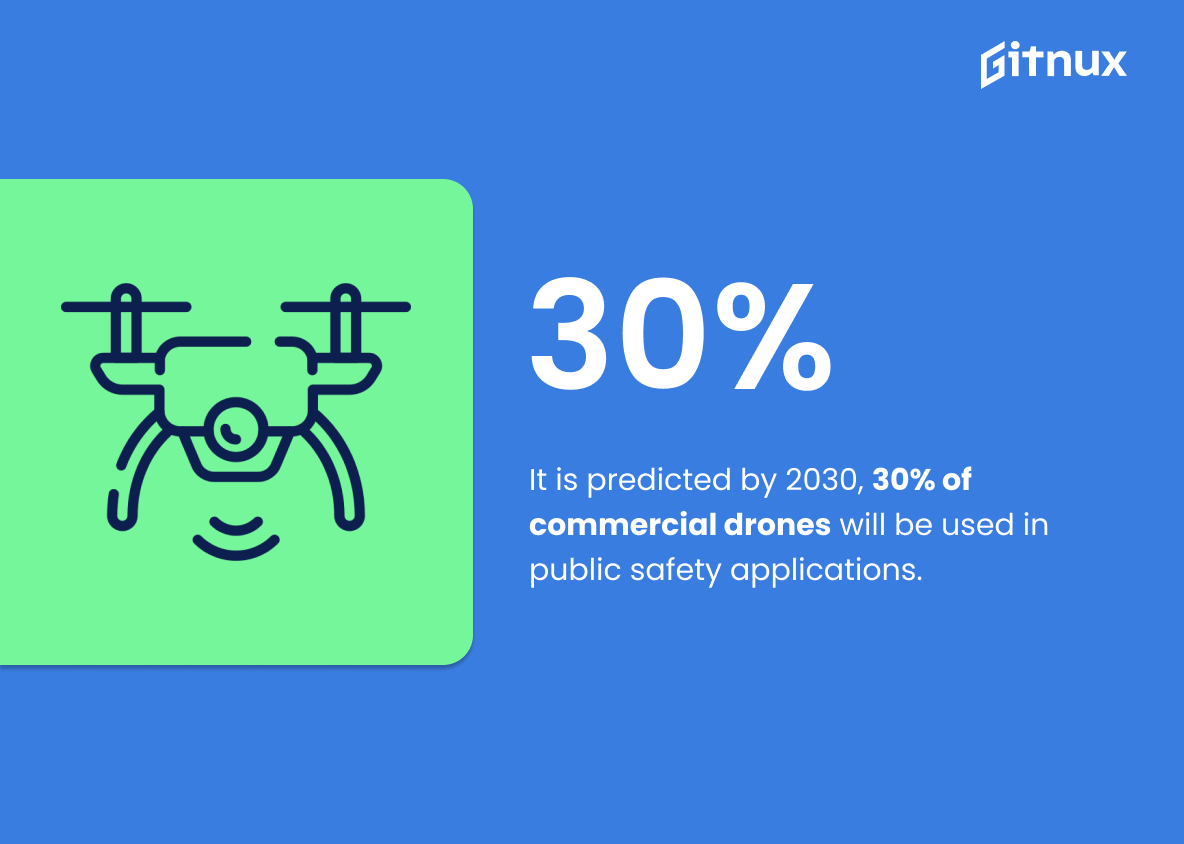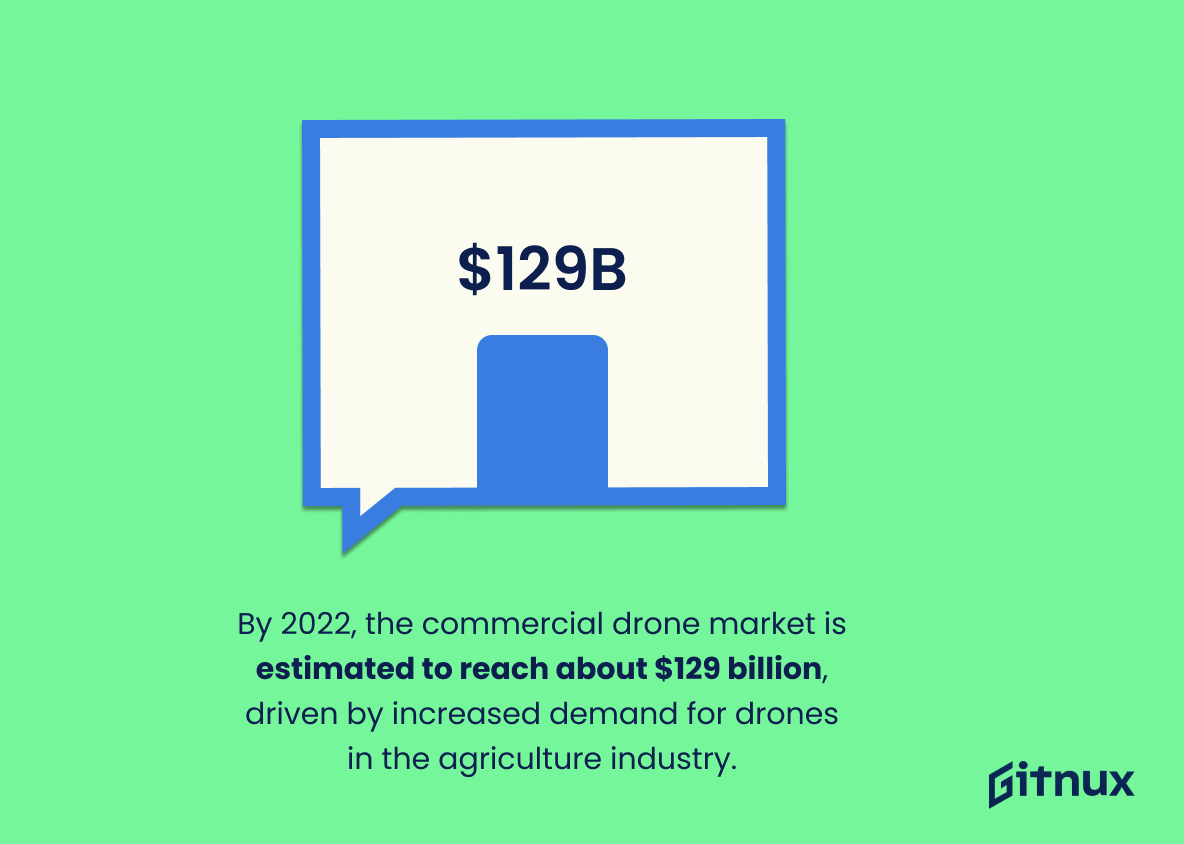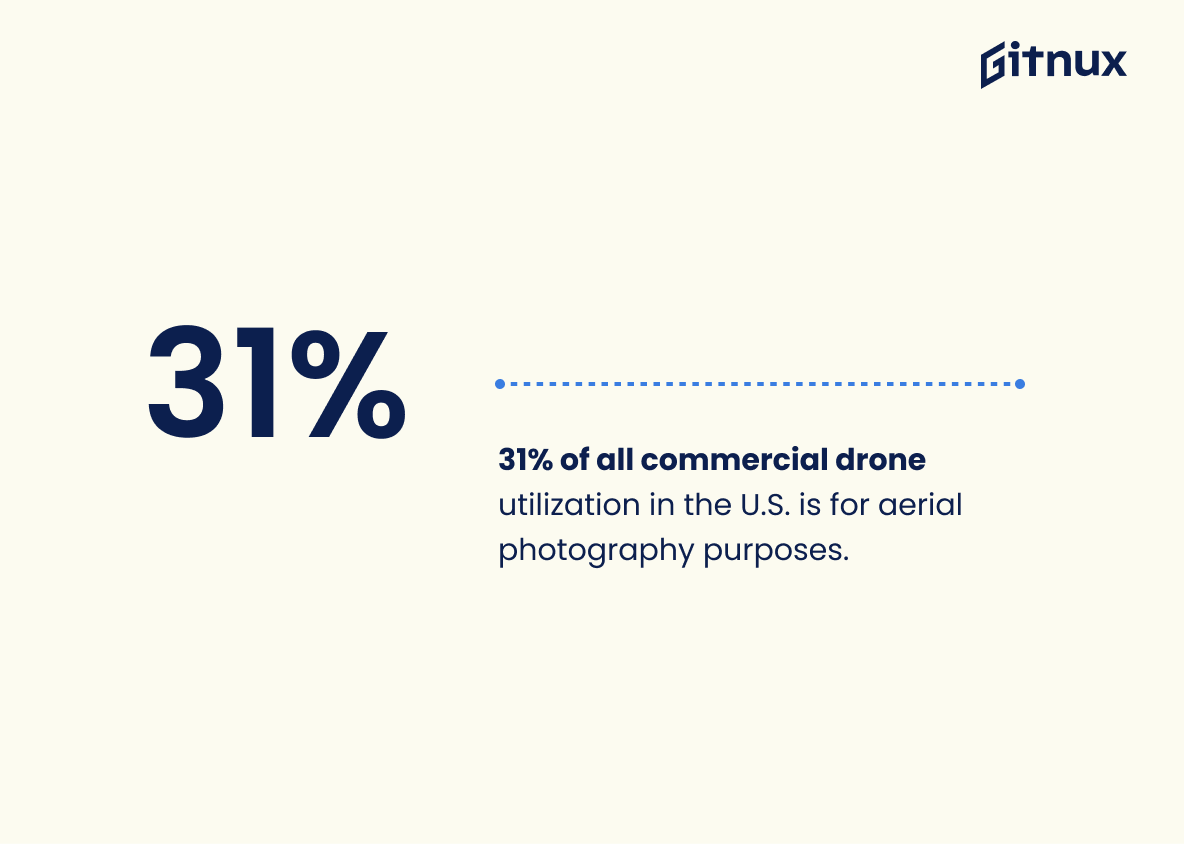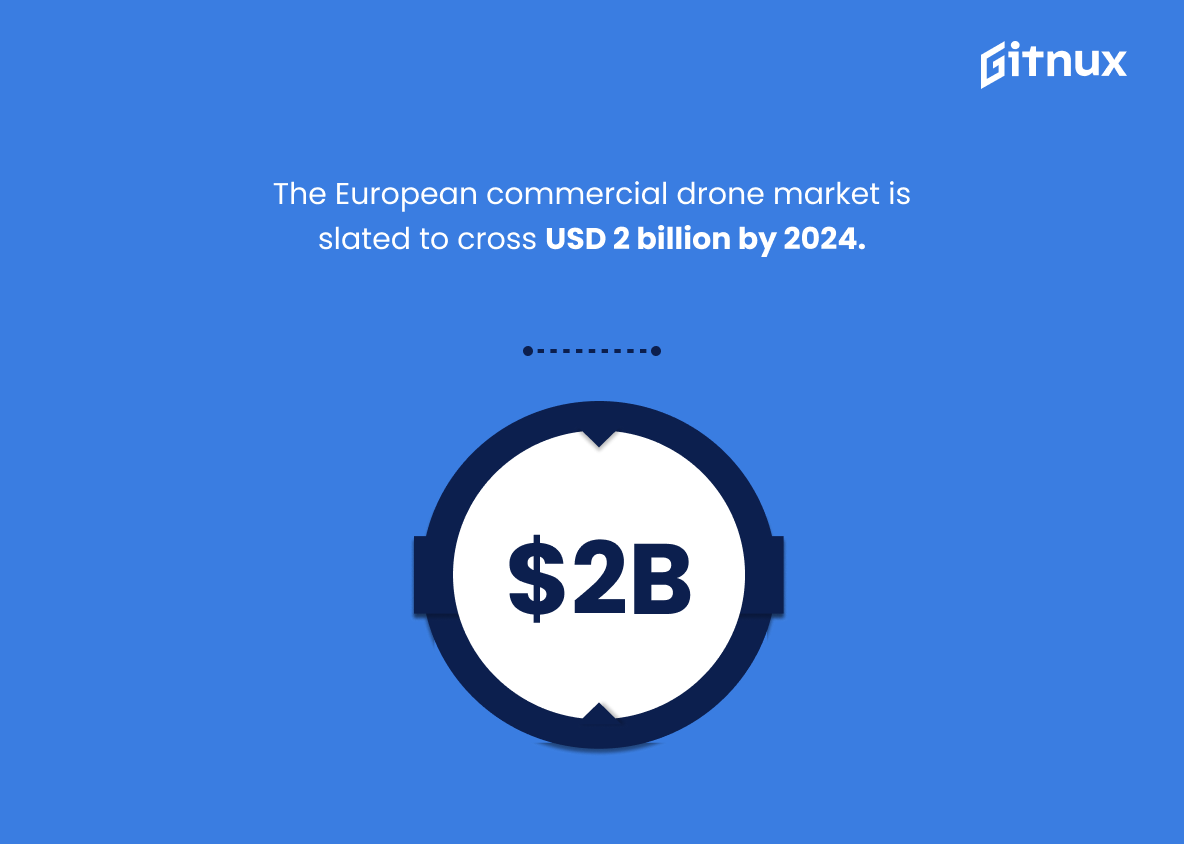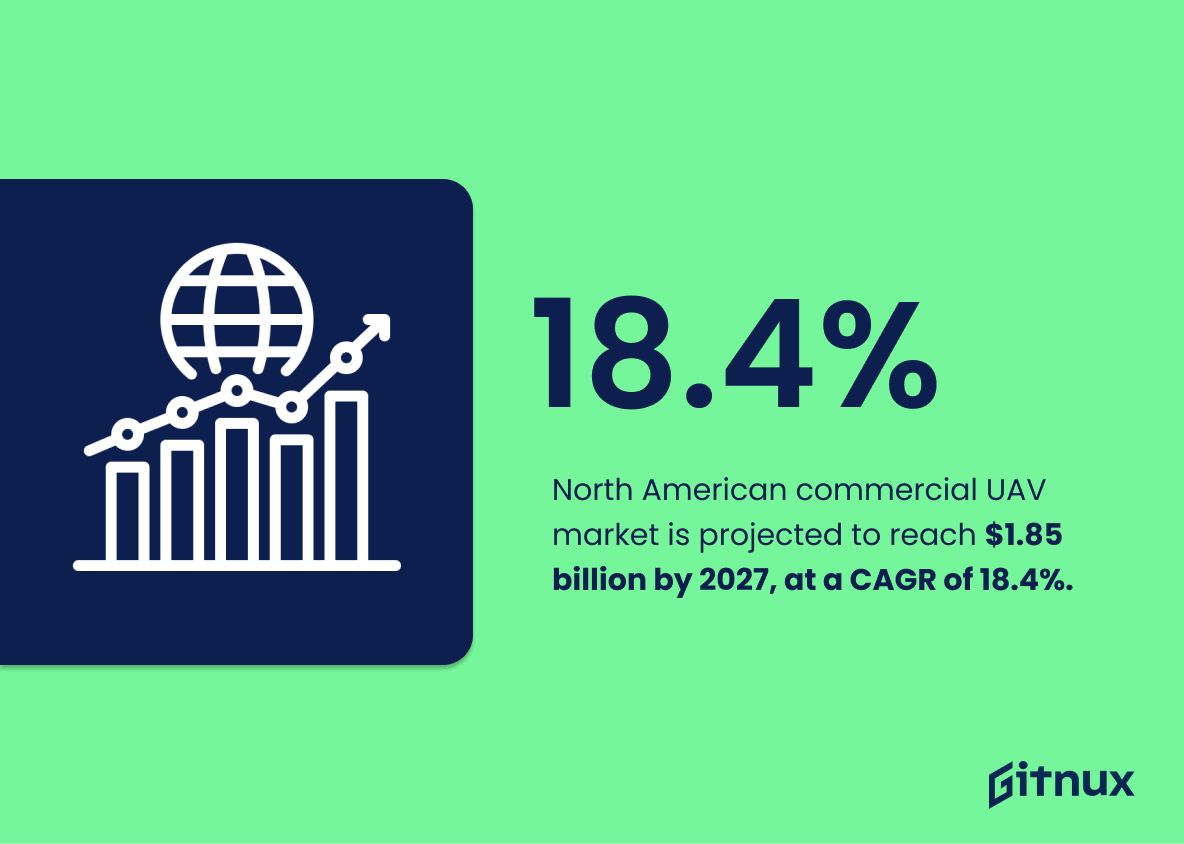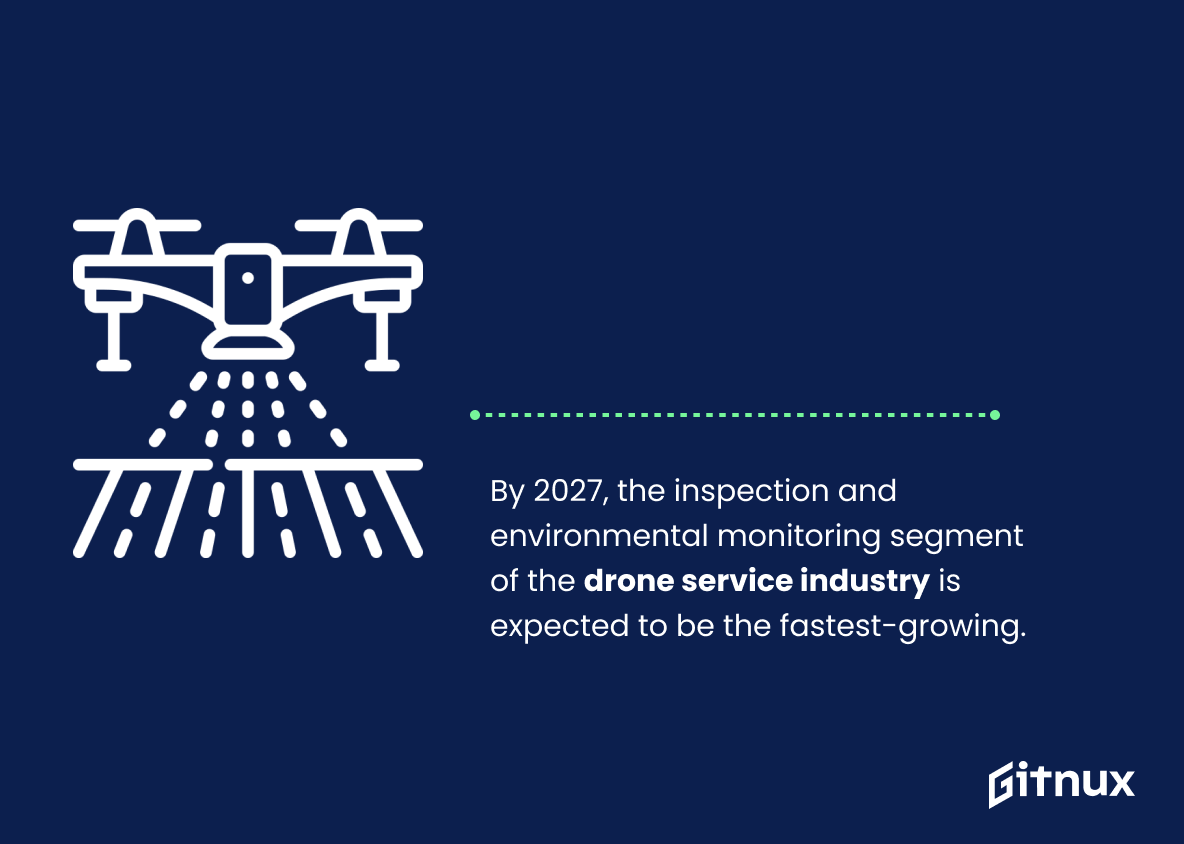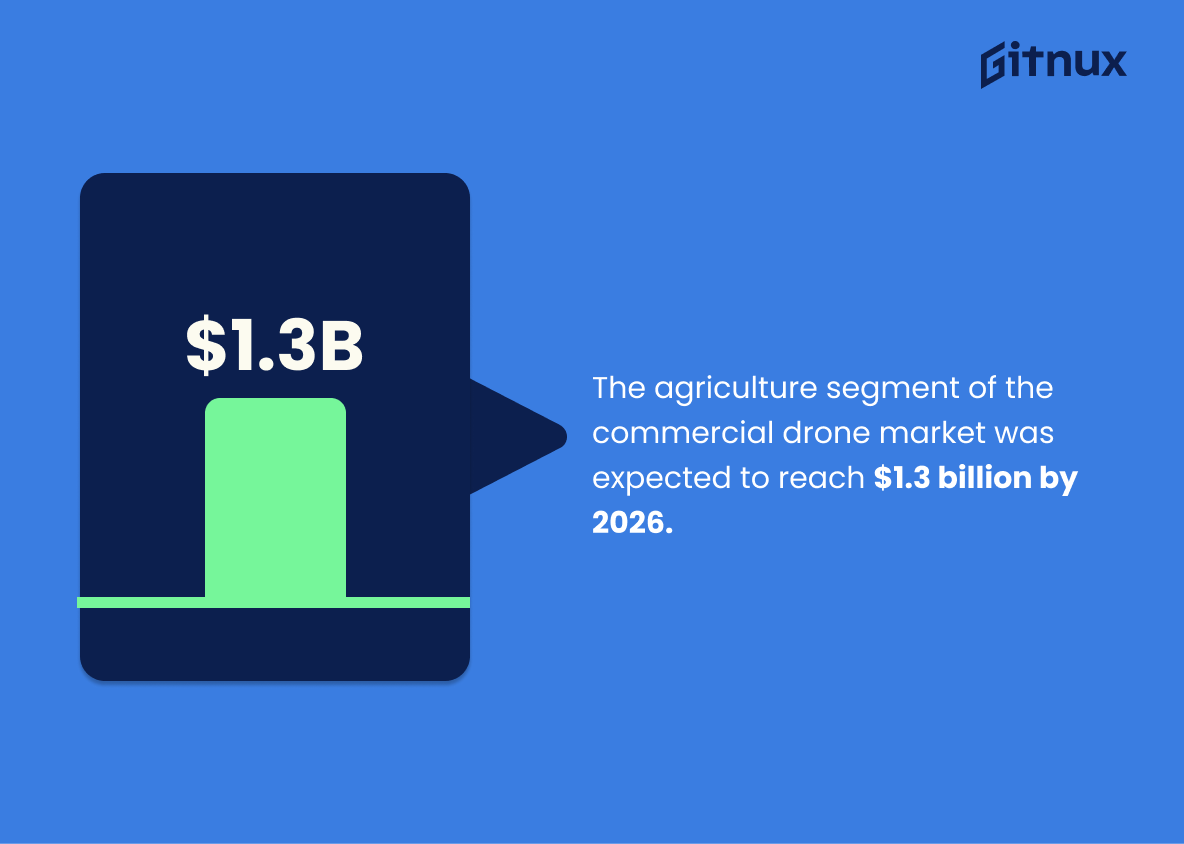In an ever-evolving landscape of technology, the commercial drone industry has truly taken flight and transformed multiple sectors including logistics, real estate, and surveillance to name a few. The impact and implications of this burgeoning market are far-reaching and fast-growing. Anchored by the latest industry insights, this blog post embarks on a journey to unfold and scrutinize the most recent commercial drone statistics.
This thorough examination will provide a unique perspective on the growth trajectory of this industry, its key players, potential opportunities, and the challenges that are being faced. Strap in for an engrossing exploration of the captivating realm of commercial drones, where the only limit is the sky.
The Latest Commercial Drone Industry Statistics Unveiled
The market size of the global drone services is set to reach $63.6 billion by 2025.
Reflecting on the staggering prophecy of the global drone services market reaching $63.6 billion by 2025, the magnitude and implications drastically reshape our understanding of the commercial drone industry. This potential exponential growth illuminates the surging relevance and application of drone services across numerous sectors. Imminently, this statistical projection paints a vista of opportunities and challenges in the drone industry landscape.
For potential investors and innovators, this pivotal insight holds the promise of high yielding investments, spawning the advent of game-changing policies, technologies and partnerships within the industry. Ultimately, this conspicuous statistics serves as a beacon guiding stakeholders in strategic decision-making as they navigate the dynamic airspace of the commercial drone industry.
About 70% commercial drones are produced in China, as of the end of 2019.
Unearthing the dominant role China plays in the commercial drone industry, the revelation that approximately 70% of these aerial apparatuses are birthed within its borders paints a vivid picture of the globe’s manufacturing landscape. Expanding our perspective beyond 2019, it initiates a thought-provoking dialogue about supply, demand, and global tech powerhouses in the rapidly advancing drone industry. Through this lens, we begin to decode the intricate web of international trade, highlighting the influence of China’s manufacturing prowess on the global commercial drone market.
This statistic, serving as statistical dopamine, sparks further intrigue as we traverse the interconnected world of the drone industry. With such a substantial percentage, the doors of understanding open wide to the myriad of factors behind this dominance, prompting a deeper exploration into technological advancements, production costs, research and development, and market strategy employed by this industry titan.
In 2020, the commercial drone market was worth around 6.5 billion U.S. dollars.
Illuminating the vast potential of the commercial drone industry, a striking data point from 2020 tells a tale of widespread adoption and burgeoning interest; the market’s worth was estimated around 6.5 billion U.S. dollars. This immense market value serves as a testament to the growing popularity and diverse applications of commercial drones across various industries, projecting a trajectory towards a promising and progressive future.
This insight is not just a reflection of an emergent trend, but an emphatic underline on the grandeur of potential market growth and investment opportunities in the drone industry. The power behind the drone revolution, as demonstrated by this monetary marker, cannot be underestimated in shaping our understanding of this technological domain’s unfolding narrative.
In 2018, the commercial drones industry provided employment to 500 to 1,000 people directly.
Deftly threading the needle of significance, this data indicating that in 2018, the commercial drones industry directly employed between 500 to 1,000 people is truly an economic beacon. It provides tangible evidence not just of the industry’s growth momentum, but also its capacity to generate employment and contribute to economic prosperity.
In essence, it becomes an economic life raft with implications for local job markets, personal incomes, and more broadly, national economic health. The gravitational pull of this statistic in our understanding of Commercial Drone Industry Statistics cannot be overstated. It paints a vigorous landscape where the drone industry is not simply a realm of fascinating tech advancements, but also a burgeoning field for job creation.
As of 2020, Canada had over 4,000 operators licensed to use drones for commercial purposes.
Unveiling the impressive number of over 4,000 licensed drone operators in Canada as of 2020 can be seen as a testament to the growing strength and relevance of the commercial drone industry. Dwellers in the realm of aerial technology find this figure intriguing as it reflects the widened acceptance and utilization of drones in commercial sectors.
This rapid traction is a clear indicator that businesses are gravitating towards leveraging drone technology, thus underscoring the potential boom in the drone industry. The burgeoning figure serves as an inspiration to innovators, an assurance to investors, and an exciting revelation to drone aficionados who are tracking industry trends.
It is predicted by 2030, 30% of commercial drones will be used in public safety applications.
Peering into the future of the commercial drone industry, one cannot overlook the compelling forecast suggesting that by 2030, nearly a third of these unmanned machines will be dedicated to public safety applications. This prediction not only underscores the immense potential of drone technology in revolutionizing emergency response systems but also hints at a shift in market dynamics.
The anticipated rise in demand for safety-conscious drones could drive innovation in the sector, making it an interesting sector for investors and entrepreneurs. Furthermore, this progressive shift in the application of drones for societal benefit augments their public perception, meaning drones are no longer simply toys or delivery vehicles. They are evolving into more integral tools of modern life, significantly contributing to the safety and well-being of communities. The impact of such a change could be profound, shaping the legislative landscape around drone usage, their designs, capabilities and market trends.
By 2022, the commercial drone market is estimated to reach about $129 billion, driven by increased demand for drones in the agriculture industry.
Highlighting a whopping projected valuation of $129 billion for the commercial drone market by 2022, underpins the monumental growth ahead for the industry. The driving force behind this surge is uncovered as the rising demand for drones within the agricultural sector.
This forecast not only demonstrates a powerful momentum, but also shines a light towards a specific sector where opportunities are most ripe. Grounded in concrete numbers, this statistic provides a snapshot of future marketplace dynamics for entrepreneurs, investors, and technologists who are eager to understand the commercial drone terrain, thus making the blog post an important tool for strategic decision-making.
31% of all commercial drone utilization in the U.S. is for aerial photography purposes.
The essence of this revealing 31% figure showing commercial drone utilization for aerial photography in the U.S. is pivotal. Not simply a trivial number, but an indicator of a thriving industry, casting a light on how the commercial drone industry is becoming increasingly intertwined with visual media production.
A glance at this statistic instantly unveils a significant market chunk, giving an insight that this technology is no longer the preserve of hobbyists but a tool of choice for professionals in various fields, especially in commercial photography. As such, it reassures current industry players of existing market viability while beckoning new entrants to consider the immense opportunities within aerial photography.
As of 2019, DJI, a Chinese company, held a massive share of the commercial and industrial drones market with approximately 70-80 percent.
Highlighting DJI’s dominance in the commercial drone market underscores the magnitude of its influence within the industry. The company’s market share, hovering around 70-80 percent, sets a towering benchmark for other competitors, reflecting its formidable positioning as the industry frontrunner since 2019. This statistic adds valuable perspective for readers interested in gauging the competitive landscape of the industry.
Moreover, it can ignite discussions around the potential implications on pricing, quality, innovation, and regulatory standards within the industrial drone industry. Considering DJI’s commanding position, any strategic decisions taken by this tech titan could largely dictate overall industry trends, impacting all other market participants. Therefore, this nugget of data serves as a pivotal point of reference in the broader commercial drone landscape narrative.
The European commercial drone market is slated to cross USD 2 billion by 2024.
Examining the projection that the European commercial drone market is set to tap into an impressive USD 2 billion by 2024, feeds into the anticipation of immense growth within the drone industry. This not only signifies a prospering market, but also resonates with the increasing acceptance and integration of drone technology across multiple business sectors in Europe.
The figure represents a major escalation, sparking curiosity and highlighting the pivotal nature of future developments in this industry. For businesses, investors, and tech aficionados, this statistic serves as an insightful bookmark on the growth trajectory of commercial drone usage in Europe, contributing significantly to the overall narrative of the blog post on Commercial Drone Industry Statistics.
North American commercial UAV market is projected to reach $1.85 billion by 2027, at a CAGR of 18.4%.
In the exciting panorama of the Commercial Drone Industry, these projected figures of the North American commercial UAV market reaching $1.85 billion by 2027, with an 18.4% CAGR, underscores a pivotal trend. These numbers not only ring the bells of a thriving industry but also highlight the vibrant pace at which this sector is set to expand.
Furthermore, this projection can also be viewed as a colossal signal, pointing towards the myriad of opportunities for innovators, investors, and businesses planning to tap into the rising tide of this market. With such a rapid growth rate, the commercial drone industry is undoubtedly set to make a significant impact in the techno-commercial landscape, reaffirming the transformative potential within the sector.
Speaking from a future perspective, if drone technology continues to evolve and regulatory frameworks become more drone-friendly, one can only anticipate an even more prosperous market expansion and substantial reinforcement of these already impressive statistics. Overall, the aforementioned statistic vividly illustrates the vast potential the drone industry possesses, making every entrepreneur and investor sit up and pay heed.
The modular solution sector holds the largest size of the drone service market and is anticipated to grow at a significant rate from 2020 to 2025.
Drone aficionados and investors alike pay attention. The modular solution sector’s preeminent standing in the drone service market is an undeniable indicator of where the action currently is. Set to embark on a sprint of growth from 2020 to 2025, this titan is shaping up to be a hotbed for both technological innovation and investment opportunities.
Therefore, understanding this key statistic could become the difference between mediocrity and flying high, and serves as a crucial compass, guiding readers through the meteorological conditions of the commercial drone industry. The landscape is on the cusp of dramatic change, and this statistic is the first gust of winds heralding the coming storm of progress and innovation.
By 2027, the inspection and environmental monitoring segment of the drone service industry is expected to be the fastest-growing.
Just imagine, an era where drones hover above us, meticulously overseeing the intricate details of our environment, extending their electronic eyes where human reach is limited. Unveiling a significant trend, experts forecast that within the sphere of the drone service industry, the inspection and environmental monitoring segment will skyrocket, reigning as the fastest-growing sector by 2027.
In the scenic panorama of commercial drone industry statistics, this information holds notable significance. It highlights an exciting era of rapid expansion and unprecedented opportunities for environmental and industrial inspection sectors. This surge suggests that corporations will increasingly rely on drone technology to monitor conditions, detect changes, and identify issues – transforming the way we conduct inspections and understand our environment.
Moreover, this impending growth divulges a revolutionary shift in business models within the industry – revealing that investing in drone-powered solutions, today, could yield substantial dividends in the near future. Finally, it broadens our visions, enabling us to grasp the fuller picture of the impact modern technology will have on our world by 2027.
The agriculture segment of the commercial drone market was expected to reach $1.3 billion by 2026.
Highlighting this projection for the agriculture segment of the commercial drone market underscores the phenomenal growth trajectory anticipated within this sector. By setting a valuation of $1.3 billion by 2026, it vividly portrays the transformative potential drones are set to bring in farming and agricultural practices.
This predicted boom not only testifies to the economic viability of commercial drones but also paves the way for stakeholders to comprehend the pivotal role of advanced technologies in revamping traditional industries. Hence, this statistic intricately weaves a crucial narrative within the tapestry of commercial drone industry statistics, helping readers comprehend the magnitude of emerging trends and opportunities.
In 2018, a total of 277,000 commercial drones were sold in the United States.
Highlighting the sale of 277,000 commercial drones in the U.S. in 2018 illuminates the growing traction in the drone market. This surge awakens an understanding of the scale and potential revenue at play within the commercial drone industry, providing readers with a tangible grasp of the sector’s upward trajectory. Additionally, this figure points to the industry’s impact on U.S. economy, further emphasizing the significance and influence of the commercial drone space.
By the end of 2023, the real estate is expected to hold the largest share in the commercial drone market.
Projecting the commercial drone market ahead, we find a remarkable revelation about the pace and direction of growth. By 2023, the real estate sector emerges as the commanding force with the majority share in this burgeoning industry. Witnessing this potential swing towards real estate illustrates the profound transformation that the industry is undergoing.
In the realm of a blog post on Commercial Drone Industry Statistics, this projection uncovers layers of significance. For one, it provides an unexpected insight, enlightening us about the key role of real estate in shaping the commercial drone landscape. More importantly, it forecasts a potential shift in industry dynamics, ultimately influencing strategies, investment decisions, and market focus in the near future.
Readers can contemplate the potential application of drones in real estate, innovative drone-tech solutions that can serve realtors, and the profound impact of these changes on the overall market. This powerful statistic challenges perceptions, invites curiosity, and drives informed dialogue about the commercial drone industry’s unfolding possibilities.
Conclusion
In sum, the commercial drone industry is exhibiting remarkable growth patterns, fueled by rapid technological advancements and expanding applications across diverse sectors. The statistics clearly indicate that drones have soared past being mere recreational gadgets to crucial tools impacting business operations globally.
However, navigating through evolving regulations, safety concerns, and issues of privacy remain significant challenges to the industry’s full potential. By staying updated with these statistical insights, businesses can strategically position themselves to leverage the immense opportunities that commercial drones bring along. The sky is indeed the limit for the revolutionary drone technology and its commercial implications.
References
0. – https://www.www.businesswire.com
1. – https://www.www.statista.com
2. – https://www.www.marketresearch.com
3. – https://www.www.researchgate.net
4. – https://www.www.marketwatch.com
5. – https://www.www.geospatialworld.net
6. – https://www.www.cnbc.com
7. – https://www.www.marketsandmarkets.com
8. – https://www.dronelife.com
9. – https://www.blog.dronebase.com
10. – https://www.www.futuremarketinsights.com
11. – https://www.gminsights.wordpress.com


